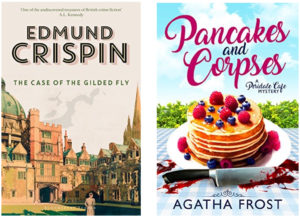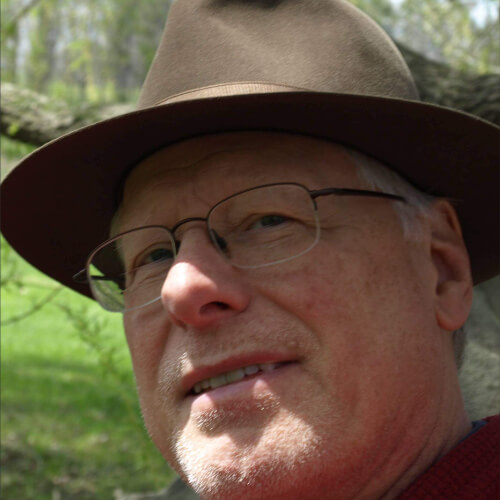
Men are from Mars and women are from Venus, so it’s said. Mark Gungor’s “Tale of Two Brains” humorously describes this difference.
Last week, I began taking a look at these differences and how they affect fiction writers. I concluded with the idea that men who read fiction are the collateral damage of the contemporary fiction scene.
This week, I want to look deeper into the notion men don’t read fiction. Before I do, I’d like you to read two articles. They are excellent and describe the problem eloquently. The first is by Jason Pinter and the second is by Porter Anderson.
Okay, now that you’ve gotten the background material, let’s look at what those two men have to say about men and fiction and what the ramifications are for indies.
Big corporate publishers believe the maxim “Men Don’t Read”. Consequently they don’t publish for men or market towards men. As Pinter points out, when there aren’t many books on the market for men to read, they’re going to do something else with their time.
While Pinter excoriates Big Publishing concerning men and reading in general, Anderson focuses on fiction. Where the bias is even greater. In fact, Anderson’s statements regarding his own and men’s attitudes in general are supported by Kate Summers in her study. (Here’s a pdf version where the tables are visible.)
As Mark Gungor would say, men have a drawer labelled “fiction”. As writers, I think we need to fill it.
Since men prefer men authors (prefer is the operative word here), it seems only logical men should write for men; at least some of the time. But do they?
Hugh Howey’s protagonist in Wool is female.
Felix Savage’s protagonist in the first three books of his Sol System Renegades series is female, and a lesbian to boot.
Michael Anderle’s protagonist is female.
TS Paul’s protagonists are female.
The list can go on and on. If men readers say they prefer men writers and men main characters (as Summers notes in her article), why aren’t we men indie writers writing for them? That is the question we need to be asking ourselves.
Mark Dawson’s survey of his mailing list (some 60,000 persons at present), revealed that readers of his John Milton series are evenly split amongst men and women. Proving Summers’s survey to be spot on: while men favor men, women are much more eclectic in their reading preferences. As Mark Gungor notes: men are not as flexible as women; it has to do with how our brains work. And we all know men are lousy at multi-tasking.
Today’s cozy mystery field is, like romance, dominated by women. Women writers and women protagonists, with the requisite love story.
However, once upon a time men wrote cozies and with men as the protagonists. A few examples:
- David Crossman with his Winston Crisp series.
- William L DeAndrea’s Matt Cobb series.
- Edmund Crispin and his Gervase Fen mysteries.
And there are others. Today, however, men have abandoned the field to women. Or perhaps the big corporate giants pushed the men out and indies followed suit.
Mark Coker’s Smashwords is heavily biased towards romance. From his own survey, half of his catalog consists of romance novels and 73% of the top 200 bestsellers on Smashwords are romance. It is well-known that Coker is cozy with romance writer organizations. Why? Perhaps he, too, believes men don’t read fiction. And wants to go where he thinks the money is.
It’s my desire to see us indies get out from under the publishing bias of the corporate giants and start catering to both sexes. After all, if half your potential market is men and the other half women, why not write for both? I mean, seriously, who wants just half a pie?
One way to do that is to have a man and woman as a dual protagonist. Men will go for the combo and so will women. Certainly a win-win to my thinking.
For cozy mysteries, the female amateur sleuth can hook up with a guy in the first book. And then in subsequent books, the two solve the crimes together. That would satisfy the romance part and would provide a strong draw for men readers.
The problem this attitude of everything for females in the fiction world causes for young men and boys is that they are turned off to reading. “It’s for girls.” “It’s for sissies.” And the drawer marked “Reading” remains closed. And perhaps never opens.
As Anderson points out in his article, ebooks just might be the best thing that could happen to men. We can read anonymously. Which is really what most of us men want. Yet, indie authors, who primarily publish ebooks, seem to be mainly writing for women. ‘Tis a pity.
Or perhaps indie men authors genuinely think men want to read about kick-ass hot women main characters. There might be some truth to that.
The pulp market of the 20s, 30s, and 40s certainly understood the power of a scantily-clad heroine being rescued by the hero. However, today’s writers seem to forget the hero. Adolescent boys and young men are into wish fulfillment. As Kate Summers notes, almost half of the men surveyed need to identify with the main character. If there is only the heroine, where is the wish fulfillment? If there isn’t any, the guys go elsewhere. Once again, reading is for the female of the species.
Independent authors are independent. We are the ones to buck the corporate giants and their preconceived notions. Unfortunately, the “get rich quick” crowd has flooded the indie field and lost somewhere in the quagmire is the male reader. Because we all know men don’t read fiction. BULL.
I have a friend who says he prefers non-fiction. Then he’ll go on and list novel after novel he’s read and asks if I’ve read it. He prefers non-fiction. Yeah, right.
The male reading public awaits. From grade school readers to us old guys. Give us books men can relate to.
One more example. Of the nine cozy mysteries I’ve recently read, all of the protagonists were women and three of the four writers were women. I enjoyed most of the books. They were light entertainment. Disposable reading.
I recently read a short story with a male protagonist, “01134” by Crispian Thurlborn. The story was profound. It was profound because mano a mano I saw something of myself in the main character and Thurlborn’s powerful writing made the experience alive. The story was “entertainment” in a philosophical, thought-provoking, and emotional manner. Definitely not disposable reading.
Indie writers, please don’t forget us men who love to read fiction. And there are a lot more of us than you think.
Comments are always welcome. Until next time, happy reading!
Share This!

Better late than never, eh?
Firstly, cheers for the nod. Perhaps the greatest compliment is when people tell you they could see something of themselves, however slight, in the character (really, of course, we all want to be Batman…).
The shift that has taken place, slow at first and now with increased rapidity, is interesting. Of course, previously the argument could be that there were too few female protagonists in fiction. As you say, the pulp market largely focused upon the ‘damsel in distress’ or ‘femme fatale’ role.
I see a lot of fiction today being a reflection of that pulp era with the roles reversed. It sells. As it did in the past. Humans are a species of extremes. We have yet to find a balance in anything. Fiction, for all its supposed openness, is no different.
Within classic literature, there have been some great female protagonists. For me, I would point to Hawthorne’s Hester Prynne, Austen’s Elizabeth Bennett, Carroll’s Alice, and Baum’s Dorothy Gale. I’m struggling to come up with some well-known characters today. That doesn’t mean there aren’t any, of course, but nothing recent springs to mind.
The novel I currently work on has a tree protagonist. I did not decide upon that for market reasons, the character simply was. In the work I have published to date, there has only been one female protagonist. In ongoing projects, there is roughly a 60-40 balance in favour of male protagonists. I haven’t thought about that before. It is interesting, though. Cheers for posting.
Ah, Crispian! Thanks for stopping by! I always appreciate your responses.
Spot on. The shift from male to female protagonists, which are simply the pulp males with a sex change, was refreshing at first. Now, for me, I’m quite tired of them. But there have been some fabulous female protagonists. Certainly the ones you mention. I might add Haggard’s She. Somewhat difficult to say if She’s the protagonist. Yet She is certainly central to the novel — and a fabulous creation.
I, too, can’t really think of any current female protagonists that are well-known or have even grabbed my imagination. But that might be part and parcel of my not being grabbed by most currently written fiction.
I love trees and in the Lord of the Rings the Ents were my favorites. I’m looking forward to your novel. And interesting you should mention it, because I have a short story, which I haven’t published, that has a civilization of “tree” beings.
Thanks for stopping by and posting your comments. Much appreciated!